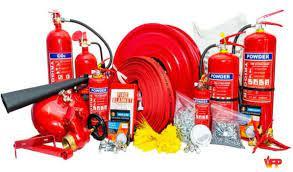IMARC Group, a leading market research company, has recently releases report titled “Fire Safety Equipment Market: Global Industry Trends, Share, Size, Growth, Opportunity and Forecast 2023-2028.” The study provides a detailed analysis of the industry, including the global fire safety equipment market growth, share, size, trends, and forecasts. The report also includes competitor and regional analysis and highlights the latest advancements in the market.
Industry Overview of Fire Safety Equipment Market
Fire safety equipment refers to a range of devices, tools, and systems designed to prevent, detect, and suppress fires, as well as protect people and property in the event of a fire emergency. These essential tools play a crucial role in mitigating the risks associated with fires and ensuring the safety of individuals in residential, commercial, industrial, and public settings. Common fire safety equipment includes fire extinguishers, fire alarms, smoke detectors, fire sprinkler systems, fire blankets, fire hoses, fire hydrants, and fire-resistant clothing. Each of these devices serves a specific purpose in the overall fire safety system. Fire extinguishers are portable devices that can be used to extinguish small fires, while fire alarms and smoke detectors are designed to detect smoke and alert occupants in case of a fire. Fire sprinkler systems automatically release water or other fire-suppressant agents to control or extinguish fires. Fire blankets are used to smother small fires or protect individuals while evacuating. Fire hoses and hydrants are essential for firefighting efforts, especially in larger buildings or industrial settings.
How Big Is the Fire Safety Equipment Market?
The global fire safety equipment market size reached US$ 51.5 Billion in 2022. Looking forward, IMARC Group expects the market to reach US$ 75.5 Billion by 2028, exhibiting a growth rate (CAGR) of 6.37% during 2023-2028.
Fire Safety Equipment Market Trends and Drivers:
The fire safety equipment market is experiencing significant growth, driven by several key trends and drivers. One of the primary factors contributing to market expansion is the increasing awareness of the importance of fire safety measures in residential, commercial, and industrial settings. As fire incidents continue to pose significant risks to life and property, governments and regulatory bodies worldwide are implementing stringent fire safety regulations, mandating the installation of fire safety equipment in buildings. The growing adoption of smart and connected fire safety systems is also fueling market growth. These advanced systems use IoT (Internet of Things) technology and sensors to monitor fire risks in real-time, enabling prompt detection and response to potential fire incidents. Such systems are gaining popularity among industries, as they offer improved efficiency and ease of maintenance. Another driving force in the fire safety equipment market is the increasing use of advanced fire suppression systems. Traditional fire extinguishers are being replaced by more effective and environmentally friendly options, such as clean agent suppression systems and water mist systems. These advanced solutions offer faster response times and minimize damage to property while ensuring the safety of occupants.
What Is Included in Market Segmentation?
The report has segmented the market into the following categories:
Breakup by Solution:
- Detection
- Detectors
- Alarms
- Suppression
- Extinguishers
- Sprinklers
Breakup by Application:
- Commercial
- Industrial
- Residential
Breakup by Region:
- North America
- United States
- Canada
- Asia-Pacific
- China
- Japan
- India
- South Korea
- Australia
- Indonesia
- Others
- Europe
- Germany
- France
- United Kingdom
- Italy
- Spain
- Russia
- Others
- Latin America
- Brazil
- Mexico
- Others
- Middle East and Africa
Who Are the Key Players Operating In The Industry?
Carrier Global Corporation, Eaton Corporation plc, Gentex Corporation, Halma plc, HOCHIKI Corporation, Honeywell International Inc., Johnson Controls International PLC, Napco Security Technologies Inc., Nittan Co. Ltd. (Secom Co. Ltd.), Robert Bosch GmbH, Siemens AG and Space Age Electronics Inc.
